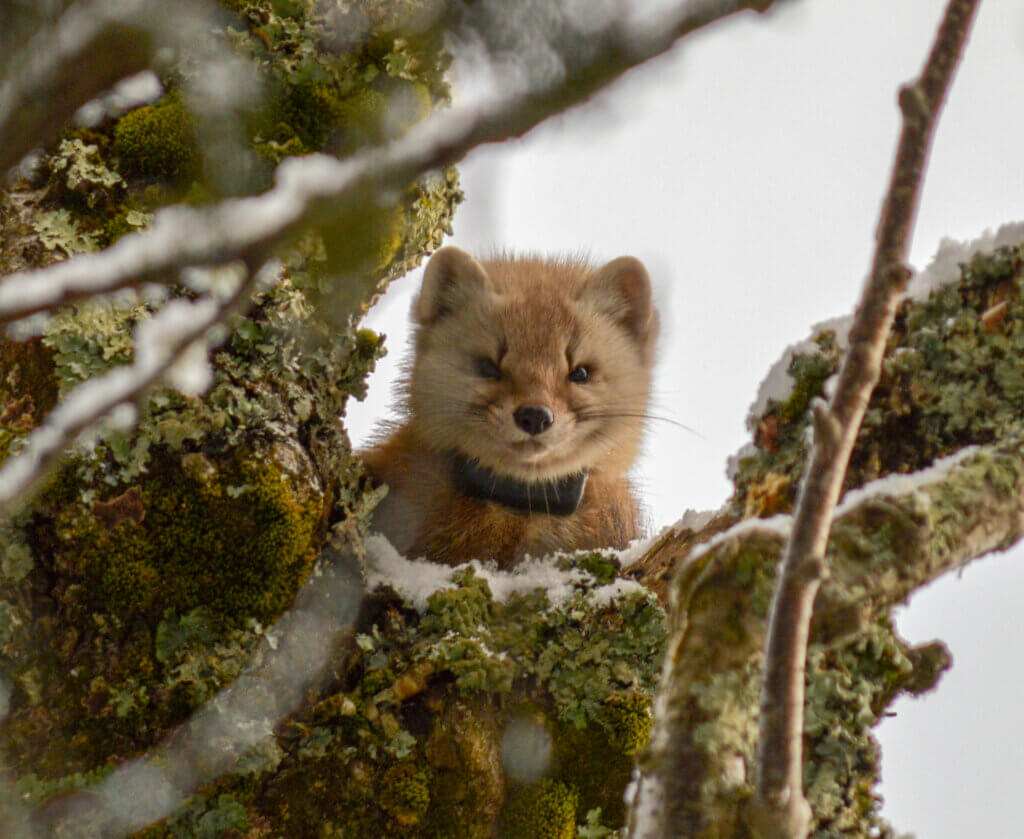
Endangered Marten Habitat at Sack Lake Hemlocks Conservation Area
By Carrie Rasmussen, Philanthropy Director
Knowing that the Northwoods Land Trust’s (NWLT) Sack Lake Hemlocks Conservation Area in Iron County has suitable American marten (Martes americana) habitat, there’s a strong likelihood that the marten hunts and dens there.
Zach Wilson, Conservation Specialist with Iron County, thinks so. The marten is documented as living in parts of ten northern counties in Wisconsin. Many of Zach’s marten studies take place across the road from Sack Lake. And since male martens average about two square miles in territory, and females average one square mile, NWLT is pretty confident martens are finding the protected landscape at Sack Lake to be of use during their life cycle.
This solitary and curious member of the weasel family depends on mature and old-growth mixed conifer-hardwood forests, like those found at Sack Lake. These forests provide prey, protection and den sites. Especially critical is the presence of mature trees with large cavities, large snags, fallen trees, stumps and root mounds. Areas with windfalls provide the needed shelter and access to prey under deep snow.
The American marten population has been recovered, to some extent, since they were extirpated from the state in the 1920s due to unregulated trapping and extensive habitat loss from logging. The last two past reintroduction projects occurred in 1975-83 and 1987-90, successfully establishing breeding populations in parts of the Chequamegon-Nicolet National Forest.
Still, the American marten remains a state listed endangered species, and it’s not clear to wildlife biologists why they have failed to expand their numbers and ranges here. It’s thought that perhaps because its primary competitor, the fisher (Pekania pennanti), has a significant overlap niche, so competition between the two species may be delaying the recovery of martens.
Martens mate in our Wisconsin northwoods in early to mid-summer. A reproductive quirk known as delayed implantation, or embryonic diapause, is a characteristic of martens, fishers and other weasels. According to the WDNR, “Although the female marten’s eggs are fertilized by mid-summer, they don’t fasten to the wall of her uterus until January or February. The fetuses then develop quickly; young are born in late March or April, nine months after fertilization. The female makes a den in a hollow tree, stump or rock crevice, lines it with leaves, moss and other vegetation and gives birth to 2- 4 kits.” The kits are weaned at 6-7 weeks old, then mom soon leaves to mate again. To avoid potential loss of dependent kits in suitable habitat within American marten range, do not cut trees between March 15 and May 31. Kits are almost full-grown when three months old, and then they disperse from their home territory to establish ones of their own.
Less than one percent of old-growth forests exist in Wisconsin today. If more private landowners and conservation groups in the northwoods manage land to transition to old-growth, martens would benefit. Visit our Old-Growth Forest Initiative for more information.
Sources:
American Marten (Martes americana) (wi.gov)
Assessing the success of American marten reintroduction to northern Wisconsin | Pauli Lab
Delayed Implantation (And Other Weasel-like… | The Outside Story (northernwoodlands.org)


